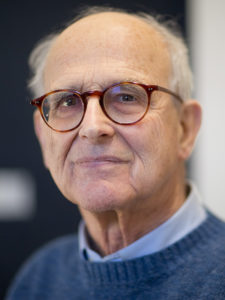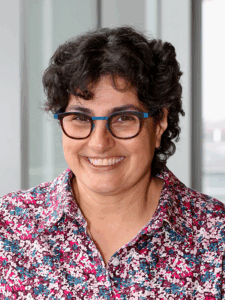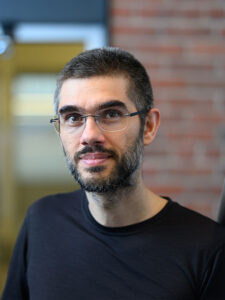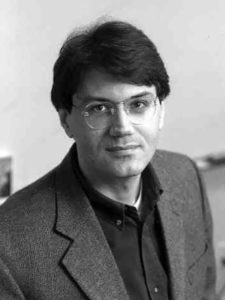Detecting Gravitational Waves
A century after first predicted, scientists validated Einstein by listening to invisible ripples in the universe.
Albert Einstein’s general theory of relativity predicted the existence of gravitational waves — distortions in spacetime — but assumed that they would be virtually impossible to detect from Earth.
On Sept. 14, 2015, at approximately 5:51 a.m. EDT, a gravitational wave — a ripple from a distant part of the universe — passed through the Earth, generating an almost imperceptible, fleeting wobble that would have gone completely unnoticed save for two massive, identical instruments, designed to listen for such cosmic distortions.
Since this first discovery, LIGO has detected other gravitational wave signals, also generated by pairs of spiraling, colliding black holes. The latest discovery of a neutron-neutron star merger producing gravitational waves opens the field of a long-awaited “multi-messenger astronomy” to understand astrophysical events in both gravitational waves and electromagnetic waves — our cosmic messengers.
The Laser Interferometer Gravitational-wave Observatory, or LIGO, consists of two L-shaped interferometers, each 4 kilometers in length, separated by 1,865 miles. On Sept. 14, 2015, scientists picked up a very faint wobble in the instruments and soon confirmed that the interferometers had been infinitesimally stretched — by just one-ten-thousandth the diameter of a proton — and that this minuscule distortion arose from a passing gravitational wave.
The LIGO Scientific Collaboration, with the Caltech-MIT LIGO Laboratory and more than 1,000 scientists at universities and observatories around the world, confirmed the signal as the first direct detection of a gravitational wave by an instrument on Earth. The scientists further decoded the signal to determine that the gravitational wave was the product of a violent collision between two massive black holes 1.3 billion years ago.
Since this first discovery 10 year ago, LIGO has detected many other gravitational wave signals, also generated by pairs of spiraling, colliding black holes. The latest discoveries of neutron-neutron star mergers producing gravitational waves opens the field of a long-awaited “multimessenger astronomy” to understand astrophysical events in both gravitational waves and electromagnetic waves — our cosmic messengers.
Highlights
Cosmic Explorer
The MIT-led project aims to detect gravitational waves from the earliest universe
Cosmic Explorer
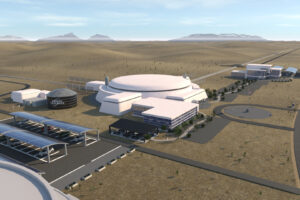
"We think Cosmic Explorer could detect hundreds of thousands of black hole binaries and up to a million neutron star mergers per year."
The Sound of Gravity
The Sound of Gravity
Albert Einstein had a theory. MIT scientists help prove it a century later. Directed by Sarah Klein & Tom Mason of Redglass Pictures for the MIT School of Science. 2020.
Your browser does not support video embeds, please follow the link below to watch the video.
https://www.youtube.com/embed/UMP3ZSVclmg?feature=oembed&controls=1&hd=1&autohide=1&showinfo=0&modestbranding=1&rel=0&color=whiteBIGGEST BLACK HOLE MERGER YET
A “bang” in LIGO and Virgo detectors signals most massive gravitational-wave source yet
BIGGEST BLACK HOLE MERGER YET
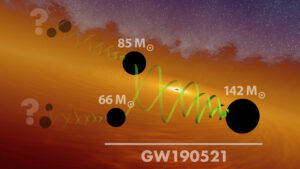
Astronomers may have detected the most massive collision of two black holes ever discovered, a chaotic merger that occurred some 7 billion years ago, the signs of which have only just reached us. The cataclysmic event offered researchers a front-row seat to the birth of one of the Universe’s most elusive objects. The distant show included two major players: one black hole roughly 66 times the mass of our Sun, and another black hole roughly 85 times the mass of our Sun. The two came close together, rapidly spinning around one another several times per second before eventually crashing together in a violent burst of energy that sent shockwaves throughout the Universe. The result of their merger? One single black hole roughly 142 times the mass of our Sun. “For every event like this one, there will be roughly 500 mergers of smaller black holes, so it’s very rare,” [Salvatore Vitale, an assistant professor at the LIGO Lab of MIT studying gravitational waves, tells The Verge.]
New Instrumentation
Quantum "squeezer" improves detection capability
New Instrumentation
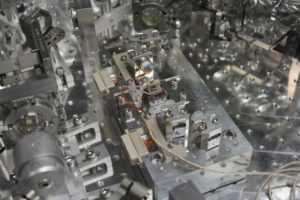
“This quantum noise is like a popcorn crackle in the background that creeps into our interferometer, and is very difficult to measure,” adds Nergis Mavalvala, the Marble Professor of Astrophysics and associate head of the Department of Physics at MIT. With the new squeezer technology, LIGO has shaved down this confounding quantum crackle, extending the detectors’ range by 15 percent. Combined with an increase in LIGO’s laser power, this means the detectors can pick out a gravitational wave generated by a source in the universe out to about 140 megaparsecs, or more than 400 million light years away. This extended range has enabled LIGO to detect gravitational waves on an almost weekly basis.
Black Hole Vibrations
Scientists detect tones in the ringing of a newborn black hole for the first time
Black Hole Vibrations

Now, physicists from MIT and elsewhere have studied the ringing of an infant black hole, and found that the pattern of this ringing does, in fact, predict the black hole’s mass and spin — more evidence that Einstein was right all along. “We all expect general relativity to be correct, but this is the first time we have confirmed it in this way,” says the study’s lead author, Maximiliano Isi, a NASA Einstein Fellow in MIT’s Kavli Institute for Astrophysics and Space Research.
Hubble Constant
Gravitational waves could reveal how fast our universe is expanding
Hubble Constant
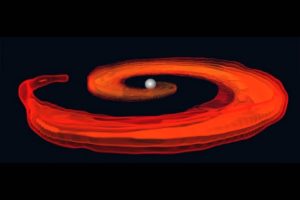
Scientists from MIT and Harvard University have proposed a more accurate and independent way to measure the Hubble constant, a unit of measurement that describes the rate at which the universe is expanding. Using gravitational waves emitted by a relatively rare system: a black hole-neutron star binary, a hugely energetic pairing of a spiraling black hole and a neutron star, should yield the most accurate value yet for the Hubble constant.
Science in light and sound
Why do gravitational waves matter?
Science in light and sound
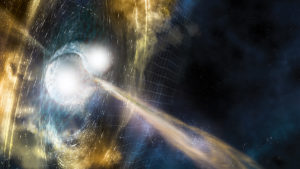
Since LIGO’s first detection of gravitational waves, we’ve gained unexpected insight into the cosmos. Theorists had predicted that what follows the initial fireball of a neutron star merger is a “kilonova” — a phenomenon by which leftover material from a collision glows with light. Using gravitational waves, scientists could pinpoint and then record new light-based observations indicating that heavy elements, such as lead and gold, are created in these kilonova and subsequently distributed throughout the universe — opening the window of a long-awaited “multi-messenger” astronomy.
Neutron stars collide
Neutron stars collide
Ushering in the new era of multi-messenger astronomy with a bang
Your browser does not support video embeds, please follow the link below to watch the video.
https://www.youtube.com/embed/sgkDoSbHHVU?feature=oembed&controls=1&hd=1&autohide=1&showinfo=0&modestbranding=1&rel=0&color=whiteFirst detection
LIGO signal revealed first observation of two massive black holes colliding
First detection

Gravitational waves emanating from the collision of two black holes holes was detected for the first time by LIGO. This computer simulation shows two black holes, each roughly 30 times the mass of the sun, about to merge together 1.3 billion years ago.
One small chirp for humankind
One small chirp for humankind
Listen to the collision of two black holes
And yet despite the crazy, Matt Evans and his colleagues did it. The LIGO team used those L-shaped buildings to detect gravitational waves that were produced by a collision of two black holes more than a billion light years away.
The Team
News
-
Viewing the universe through ripples in space
February 18, 2025
-
3 Questions: A bigger, better space-ripple detector
August 31, 2023
-
Physicists observationally confirm Hawking’s black hole theorem for the first time
July 1, 2022
-
LIGO and Virgo detect rare mergers of black holes with neutron stars for the first time
June 29, 2021
-
Rainer Weiss: The MIT physicist who started a new revolution in astronomy
December 13, 2017
-
Nergis Mavalvala explores gravitational waves and quantum physics
November 23, 2017
-
The winners of the 2017 Nobel Prize in physics helped us see the universe anew
October 3, 2017
-
How the first gravitational waves were found
February 11, 2016
Please contact Jennifer Rosales if you are considering a gift to the School of Science.
